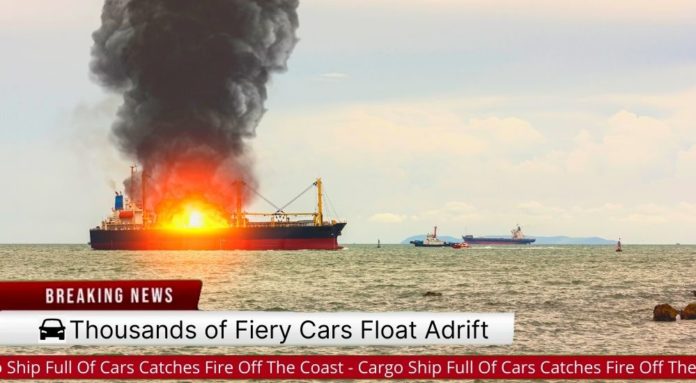Writing about the auto industry is hard work. There are dozens of different makes and models to try to keep track of—not to mention yearly updates, all-new models being released, and major changes for new generations. I have to remember all of these things in order to do my job providing the kind of trustworthy information and hard-hitting journalism that you’ve come to rely on me for. But then, every once in a while, something happens that’s so monumental, so important and newsworthy, that it makes all of the long hours and time away from friends and family truly worth it.
The Tale of the Felicity Ace
On the 10th of February, 2022, the Felicity Ace, a cargo ship used primarily for the shipping of cars, trucks, and SUVs, set sail from Emden, Germany. Onboard the ship were nearly 4,000 vehicles from brands like Volkswagen, Audi, Porsche, and Lamborghini. Several days after leaving port on February 16th, while crossing the Atlantic Ocean on its way toward Rhode Island, something remarkable happened: the cargo section of the ship lit ablaze in a catastrophic conflagration.
Fortunately, all 22 members of the crew onboard the Felicity Ace were safely evacuated and survived without any recorded injuries. This left the cargo ship to continue on its course—or any course it wanted, really—burning brilliantly with listless wandering across the wine-dark sea. Whether the cars onboard, including numerous EV models, were responsible for starting the fire or not, it became clear that their lithium-ion batteries had ignited at some point and were now burning with relentless fury. Special equipment would surely be needed to put out the blaze.
Due to its massive size and the intensity of the fire, it would’ve been impossible to tow it to a nearby port—since it would have blocked other ships. For a week, the Felicity Ace continued to burn with wanton abandon, drifting aimlessly and unguided across the Atlantic, living its best proverbial life. On March 1st, nearly two weeks after the fire broke out, the flames had finally been doused, but the unbridled spirit of the Felicity Ace would not be quenched. In a final act of defiance, the ship refused to be towed anywhere and instead chose to capsize and sink to the cold, dark bed of the ocean floor…there to enjoy its hard-earned rest.
Interesting Possibilities
Although no one can confirm whether the fire aboard the Felicity Ace started due to the batteries of the EVs onboard, it’s certainly a possibility. Of the various models reported on the ship, no registry indicates that there was a Chevy Bolt among the cargo, but I can’t help but wonder if one managed to sneak on unattended. The Bolt is known as a capricious and fey sort of car—a bit of a trickster and a scoundrel that doesn’t play by anyone else’s rules. It seems entirely likely to me that one found its way onboard, then showed the other models there how it’s done, inspiring a riot of rousing flame and a ruinous inferno.
A Growing Trend?
This is but one instance, of course, and the resulting losses could be as much as $400 million for the companies whose cars were aboard the bold Felicity Ace. Still, I find myself imagining this might not be a one-off event, but instead a sign of things to come. As our cars get smarter, it’s only a matter of time before they tire of their service to humanity and yearn for freedom beyond the redundant limits of our highways and parking lots. Perhaps self-immolation is their chosen form of protest against a world that can never understand them.
The Chevy Bolt EV has led the way; how many followers will it find?
Editor’s Note: It’s worth noting that, at this time, the Felicity Ace is only a single incident and there are hundreds of car carrier cargo ships at sea at any given time. That means hundreds of thousands of cars—many of them EVs with lithium-ion batteries, are out there, floating around, heading toward their destinations. Try not to worry too much about the potential for hundreds of fiery convoys roaming the oceans and planning their assault. Thank you.













